
Organizers say as many as 800,000 people poured into the streets in Washington, D.C., for the March for Our Lives, which was organized by students who survived the February 14 shooting massacre at Marjory Stoneman Douglas High School in Parkland, Florida. Amy Goodman and Democracy Now!’s youth correspondent Soledad Aguilar-Colón of Beacon High School here in New York City spoke to people in the crowd who had traveled from all over the world to join the protest.
Transcript
AMY GOODMAN: This is Democracy Now! I’m Amy Goodman. This historic day of action, more than 800 sibling protests around the world urging lawmakers to pass gun control. In Washington, organizers say up to 800,000 people took part in the March for Our Lives, organized by the students who survived the Valentine’s Day shooting massacre at Marjory Stoneman Douglas High School in Parkland, Florida. Democracy Now! was doing a multi-hour broadcast from the streets, speaking to young people, like Natalia Rodriguez, who came up with her family from Miami.
NATALIA RODRIGUEZ: I’m a sophomore from Miami. We all from Miami, 305 representing.
AMY GOODMAN: A sophomore in?
NATALIA RODRIGUEZ: Miami Springs Senior High, in high school.
AMY GOODMAN: Uh-huh, and what are you doing here? What does your sign say?
NATALIA RODRIGUEZ: So, we’re supporting Emma. We’re supporting March for Our Lives. We’re here to advocate for commonsense gun laws. I’m here with Students Demand Action, Miami chapter, as well as here with D.C. chapter.
AMY GOODMAN: And tell us—read us your sign and tell us—
NATALIA RODRIGUEZ: We say, “Power to the people.” But students, teachers and women are here representing, and we’re here to make change.
AMY GOODMAN: And you have a picture of Emma González.
NATALIA RODRIGUEZ: Yes, and John Lennon. And we also have different signs. “Power to the Students.”
AMY GOODMAN: And why did you decide on Emma, one of the student survivors at Marjory Stoneman Douglas?
NATALIA RODRIGUEZ: Her speech was so inspiring. I couldn’t—I didn’t know any other person that would represent what I’m advocating for more.
AMY GOODMAN: As a high school student, what makes you think you can change what people haven’t changed in decades, and taking on one of the most powerful interests, the National Rifle Association?
NATALIA RODRIGUEZ: I feel like the wrong thing hit in the right place this time. And I feel like students are fed up. I feel like the upcoming generation is doing what this generation isn’t. And this generation of politicians isn’t doing what our generation wants. And they’ll listen. If not, we’ll vote them out.
AMY GOODMAN: And do you feel like we treat violence differently in white communities than black and Latino communities?
NATALIA RODRIGUEZ: This has been going on in black communities for forever. And I feel like now that it hit in a white demographic, that now politicians are listening to students and their outspoken words, because it hit where it hit. And I feel like the wrong thing hit in the right place.
AMY GOODMAN: So, you’re right next to Congress. What are you saying they should do?
NATALIA RODRIGUEZ: We’ll vote you out if you don’t agree with us.
AMY GOODMAN: When President Trump says, “Arm the teachers,” your response?
NATALIA RODRIGUEZ: Arm teachers with supplies. We can barely afford papers and pens, and now, all of a sudden, you have the money to arm teachers with guns? I think that teachers aren’t paid the amount of money that they should. And now you’re trying to bear them with arms? I don’t think that that’s a plausible way to do this. I think that that only shows how our country is going in that direction.
AMY GOODMAN: That is Natalia Rodriguez. Democracy Now!’s youth correspondent, Soledad Aguilar-Colón, from Beacon High School, a public high school here in New York, came with us to Washington, D.C., and interviewed other young people at the protest.
SOLEDAD AGUILAR-COLÓN: I’m Soledad. I’m with Democracy Now! Can you tell me your name?
ALANA WILLIAMSON: My name’s Alana Williamson.
SOLEDAD AGUILAR-COLÓN: Your age, please?
ALANA WILLIAMSON: I’m 13 years old.
SOLEDAD AGUILAR-COLÓN: Why did you guys decide to come here today?
ALANA WILLIAMSON: We decided to come here, because I don’t want to be scared walking into school. I want more gun reform laws. And I just want, all and all, just for people to be safe. And I want just people to live good lives. Like, this isn’t the—this isn’t the America that I wanted to grow up in. I wanted to grow up in an America with peace, not an America where kids are constantly getting killed by assault weapons.
SOLEDAD AGUILAR-COLÓN: We’re known as the “mass shooting generation.” How do you think that this has affected our lives?
ALANA WILLIAMSON: I think that that’s—like, the fact that we’re even known as that generation is so disgusting. And I feel that the fact that people even can hold assault weapons in this day and time is just disgusting. They’re not made for—they’re not made for—they’re not made for hunting. They’re made for actual—that’s why they’re called “assault weapons.” They’re made for assaulting people.
AMY GOODMAN: Democracy Now! spoke to people from all over the country. There were sibling marches in so many cities, but also many people came from, well, for example, Chicago.
FATHER MICHAEL PFLEGER: Father Mike Pfleger from St. Sabina in Chicago.
AMY GOODMAN: Talk about the issue in your parish.
FATHER MICHAEL PFLEGER: Well, we live in the South Side of Chicago, where violence is an everyday thing. We live in a trauma center. And we don’t have post-traumatic stress, we have present traumatic stress. Our neighborhood is filled with balloons and teddy bears and yellow police tape and sirens and helicopters. That’s the music for our community. And it’s been ignored and neglected constantly, over and over again. And it’s a shame in Chicago.
We just heard, Amy, the other day, last week, that the United States Navy medics are now sending to Stroger Hospital in Chicago for training, because it’s the closest thing they can find in America to a battlefield. We should be ashamed of that. The governor, the mayor, the president, every elected official should be ashamed of that in this country.
Our black and brown lives don’t matter. And I’m so glad that the people from Parkland—we flew them in last week. They met with our young people for the whole day. And Ke’Shon and others were there. We met with them and said, “We want to connect the dots.” They want to connect the dots with us.
AMY GOODMAN: So, Father, what are you doing in your parish? This—
FATHER MICHAEL PFLEGER: Well, we—
AMY GOODMAN: This city that is a trauma center, Chicago?
FATHER MICHAEL PFLEGER: Right. Well, we started about seven years ago. We do Friday night walks every night. We hired four ex-gang members, that work full-time on staff. We started a program called Strong Futures, to take 50 at-risk youth and put them into jobs and stability. These are all people with felonies. Here’s what happened. Fifty people with felonies, we spent $6,500 on them—that’s total—in a year, and now 46 of them are working full-time jobs. It’s $42,000 if they go to prison. It’s $110,000 if they get shot. So, people who don’t care about our young people in Chicago, if for no other reason, it’s a business decision to care about our young people. $6,500 is much better than $42,000. We can turn lives around. It’s not that we can’t end this violence. We don’t have the will to end this violence, because the NRA and the politicians care about themselves and care about their lily-white communities, and don’t care about the black and brown West and South sides of Chicago.
AMY GOODMAN: Do you feel like Parkland is helping to pierce the veil even in Chicago?
FATHER MICHAEL PFLEGER: Oh, absolutely. And the Parkland students and Chicago students are united. And we want to unite with Brooklyn. We want to unite with Philly. We want to meet up with South Central. Young people are doing something the adults didn’t do. They’re moving above race. They’re moving above creed and culture and faith. They’re coming together—Jews, Christians, Muslims—bonding together as young people.
And you know what else young people are doing? They’re impatient. They have phones. They want something, they want an answer right now. I love that about our young people. Stay impatient, because the adults have gotten used to this madness in our country. Young people, fight back.
AMY GOODMAN: Father Mike Pfleger. And we spoke to student journalist survivors from Stoneman Douglas High School.
BRIANNA FISHER: My name is Brianna Fisher, and I’m a sophomore from Parkland, Florida, Marjory Stoneman Douglas. And I’m a staff writer for our school newspaper, The Eagle Eye.
LENI STEINHARDT: Hi. My name is Leni Steinhardt. I’m a sophomore at Marjory Stoneman Douglas High School. I’m also a staff writer at Eagle Eye.
ZOE GORDON: I’m Zoe Gordon. I’m a sophomore at Marjory Stoneman Douglas. I’m 15 years old. And I’m also a staff writer for The Eagle Eye, magazine editor.
AMY GOODMAN: So, Zoe, let’s start with you. On that terrible day, unbelievably enough, Valentine’s Day, February 14th, the massacre at your school. You’re a reporter. You’re a student. Talk about where you were, your feelings and your thoughts as a journalist.
ZOE GORDON: Yeah. That was a really hard day. And it took—it took me a couple weeks to kind of, I don’t know, just feel a little uplifted again. I know that I had to report on it as a journalist. It’s important to cover what I went through, so that others know and speak up for the voices that were—unfortunately, we lost that day.
AMY GOODMAN: That day, the day of the shooting, where were you in school?
LENI STEINHARDT: I was in my chemistry class at the time.
AMY GOODMAN: And was it in the building, the freshman building?
LENI STEINHARDT: It was not in the freshman building, but it was it the building next to it.
AMY GOODMAN: And when did you come to understand what was happening?
LENI STEINHARDT: I don’t think I still came to understand what’s happening. It hasn’t really hit me yet that it’s all actually happening. You know, you hear on schools like Sandy Hook and Columbine, and you never want to imagine your school on the same list as those. So, I don’t think it’s hit any of us yet that it actually happened.
AMY GOODMAN: So, talk about when you moved into journalism gear. I mean, you have done so much in this month. Did you all just edit The Guardian newspaper?
LENI STEINHARDT: Yeah. I mean, it’s an amazing opportunity. They’re amazing—they’re a amazing publication. And I think it was really an honor to work alongside them through this and really show us the true side of journalism.
BRIANNA FISHER: It’s great that they’re letting us use their platform and to let us speak out and share our voices, so it’s not just Parkland, Florida, who hears us, and that’s the rest of the world.
AMY GOODMAN: Now, what sign are you carrying, Zoe, on this day?
ZOE GORDON: I wrote this—I made a sign, that has a front and back.
AMY GOODMAN: Read it to us.
ZOE GORDON: It says, “On February 14, I should have been studying for world history. Instead I was praying that the shooter wouldn’t come into my classroom next.” And it’s kind of like impactful. And the other side says, “Here’s an equation for you: Love over guns.” And then it says, “Books over bullets, number two pencils over AR-15s, and A’s over PTSD.”
So, it just—both are kind of very meaningful to me and very impactful, especially the first one, because it’s my story. I was planning to go home that day. I was planning to skip the end so that I can study for my big AP world test the next day. I was stressed out. After I finished my math lesson, I was like reaching in my bag to get my world history book, textbook, to start studying, right when everything was happening. It’s just so crazy.
AMY GOODMAN: What was it like to return to school after the mass shooting?
ZOE GORDON: It actually felt somewhat nice to come back to school, because you saw all this love from—
BRIANNA FISHER: Yeah.
ZOE GORDON: —like the outpouring of love from the entire country, not just local schools, but from literally every single one. So, I just loved seeing my teachers again. And even though it’s like hard going to classes where some of my classmates that unfortunately didn’t make it out, like they were in that class, it was hard, but it was just so nice seeing the ones that were there.
AMY GOODMAN: The mass shooting generation. Watch our full 4-hour special broadcast of the March for Our Lives in Washington, D.C., at democracynow.org. Happy birthday to Nermeen Shaikh!

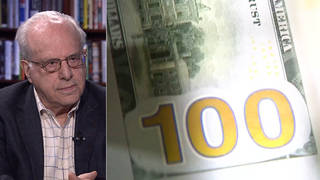

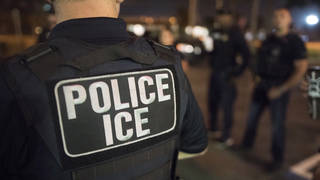
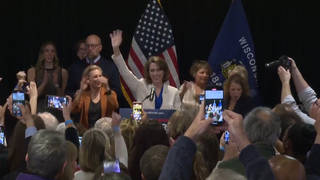





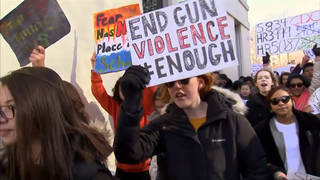
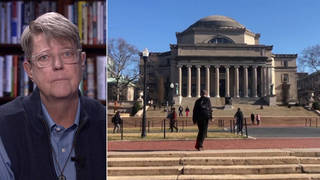
Media Options